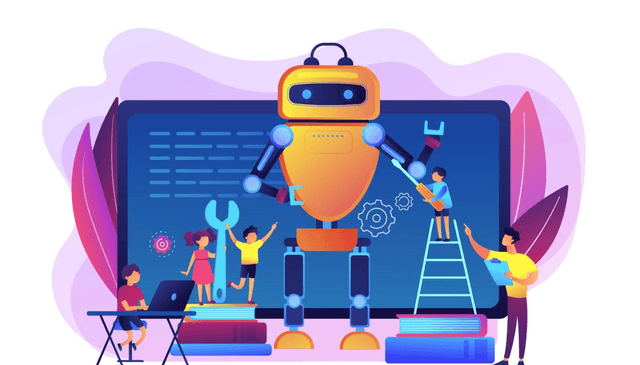
Introduction
Text analysis has come a long way from simply counting word frequency or spotting common phrases. In 2025, it’s not just about understanding what’s on the page—it’s about uncovering patterns, sentiments, and topics with the help of advanced AI. For students, researchers, marketers, and anyone who works with words, these innovations are changing the way we read, write, and interpret text.
In this blog, we’ll explore the most exciting developments in text analysis technology this year, how topic modeling has evolved, and how modern tools like PaperGen are leading the way in making content creation faster, smarter, and more human.
The Evolution of Text Analysis
Text analysis, at its core, is the process of transforming unstructured text into meaningful insights. Traditionally, this meant using keyword frequency, simple categorization, or basic grammar parsing. In 2025, though, things are far more sophisticated.
Today’s text analysis tools can:
- Understand context and nuance
- Detect emotion and sentiment
- Group similar documents through topic modeling
- Recognize rhetorical devices and tone
- Generate human-like summaries and insights
This leap in capability is largely driven by the integration of AI, natural language processing (NLP), and deep learning models that are now better than ever at mimicking how humans interpret language.
What’s New in Text Analysis in 2025
Let’s take a look at some of the most exciting innovations happening in the world of text analysis this year:
1. AI-Powered Topic Modeling at Scale
One of the biggest breakthroughs in 2025 is scalable topic modeling that not only groups documents by themes but can also adapt in real-time to changing language use and emerging trends.
Whether you're reviewing thousands of student essays or analyzing global news coverage, modern AI can quickly surface the dominant themes, contextual relationships, and even evolving sentiment over time.
2. Real-Time Sentiment Tracking
Sentiment analysis is no longer limited to identifying positive or negative words. Modern tools understand sarcasm, emotional gradients, and subtle shifts in tone over the course of a document.
This is especially useful for businesses analyzing product reviews, students studying literature, or researchers tracking public opinion.
3. Explainable AI for Text Decisions
Explainable AI (XAI) is taking center stage in 2025. New text analysis tools not only provide insights, but they also explain why certain words or themes were highlighted. This transparency is essential for educators and analysts who need to trust the results.
4. Multilingual Text Analysis
Language barriers are becoming a thing of the past. Tools now offer seamless analysis across dozens of languages, including real-time translations and culturally-aware interpretations.
Whether you’re studying Spanish poetry, analyzing Chinese social media, or translating French research papers, today’s tools ensure that nothing gets lost in translation.
5. Integration with Writing Platforms
Perhaps one of the most helpful trends is the direct integration of text analysis with writing assistants—especially platforms like PaperGen.
How PaperGen Is Redefining Text Analysis
While many platforms focus on raw data, PaperGen is all about applying text analysis to help real users write better. It's a cutting-edge writing assistant that uses the latest advancements in AI, including topic modeling, to provide valuable support for academic and professional writing.
Here’s how PaperGen fits into the 2025 text analysis landscape:
1. Topic Modeling for Smarter Essays
PaperGen identifies dominant topics in source materials and helps you build structured outlines based on those insights. Whether you’re tackling a literature review or comparing research findings, this feature ensures your writing stays on track and relevant.
2. Tone & Structure Guidance
With the help of AI-driven style analysis, PaperGen offers suggestions to match your writing tone with your audience—whether that’s a formal academic paper or a more conversational blog post.
3. Keyword Optimization
PaperGen detects the most important keywords in your content and ensures they’re used effectively, helping your writing rank better in search engines without keyword stuffing.
4. Human-Like Rewriting Suggestions
Need to improve clarity? PaperGen doesn’t just simplify text—it enhances flow and word choice while keeping your voice intact. The result is human-like content that doesn’t feel robotic.
5. Plagiarism-Free, Ethical Outputs
Each output from PaperGen is 100% original. It helps students and professionals generate new ideas and frameworks, rather than encouraging shortcuts or recycled content.
Use Case: Academic Research Writing
Imagine you’re writing a paper on climate change policy. You’ve gathered several articles, but you're overwhelmed by the volume of information. With PaperGen:
- The tool identifies core topic modeling themes (e.g., emissions policy, carbon markets, public opinion)
- Suggests an essay structure based on those themes
- Provides tone and clarity enhancements
- Highlights related keywords for better focus
In less than an hour, you’ve turned a messy research folder into a cohesive draft.
Use Case: Marketing Content Strategy
Text analysis is essential in marketing, where understanding customer language is key. With PaperGen:
- You can analyze competitor blogs for topic modeling and tone
- Create new content briefs using those patterns
- Optimize existing pages with more targeted keywords
- Ensure your message remains consistent and human-centered
Looking Ahead: Where Text Analysis Is Going Next
By the end of 2025, we can expect even more personalization and automation in text analysis. Imagine:
- AI that adapts to your learning style
- Content generators that anticipate your argument before you make it
- Writing tools that assess emotional tone by paragraph and suggest real-time edits
PaperGen is already moving in this direction—offering intuitive tools that make sophisticated text analysis accessible to anyone, not just data scientists.
Conclusion
The world of text analysis is moving fast, and 2025 is already shaping up to be a year of groundbreaking change. From topic modeling to multilingual analysis and real-time sentiment tracking, today’s tools are more powerful—and more useful—than ever before.
But the real magic happens when these technologies are applied in practical ways. That’s what PaperGen does best: turning advanced AI into something helpful, human, and surprisingly easy to use.
Want to experience the future of text analysis for yourself? Try PaperGen today and write with confidence.


